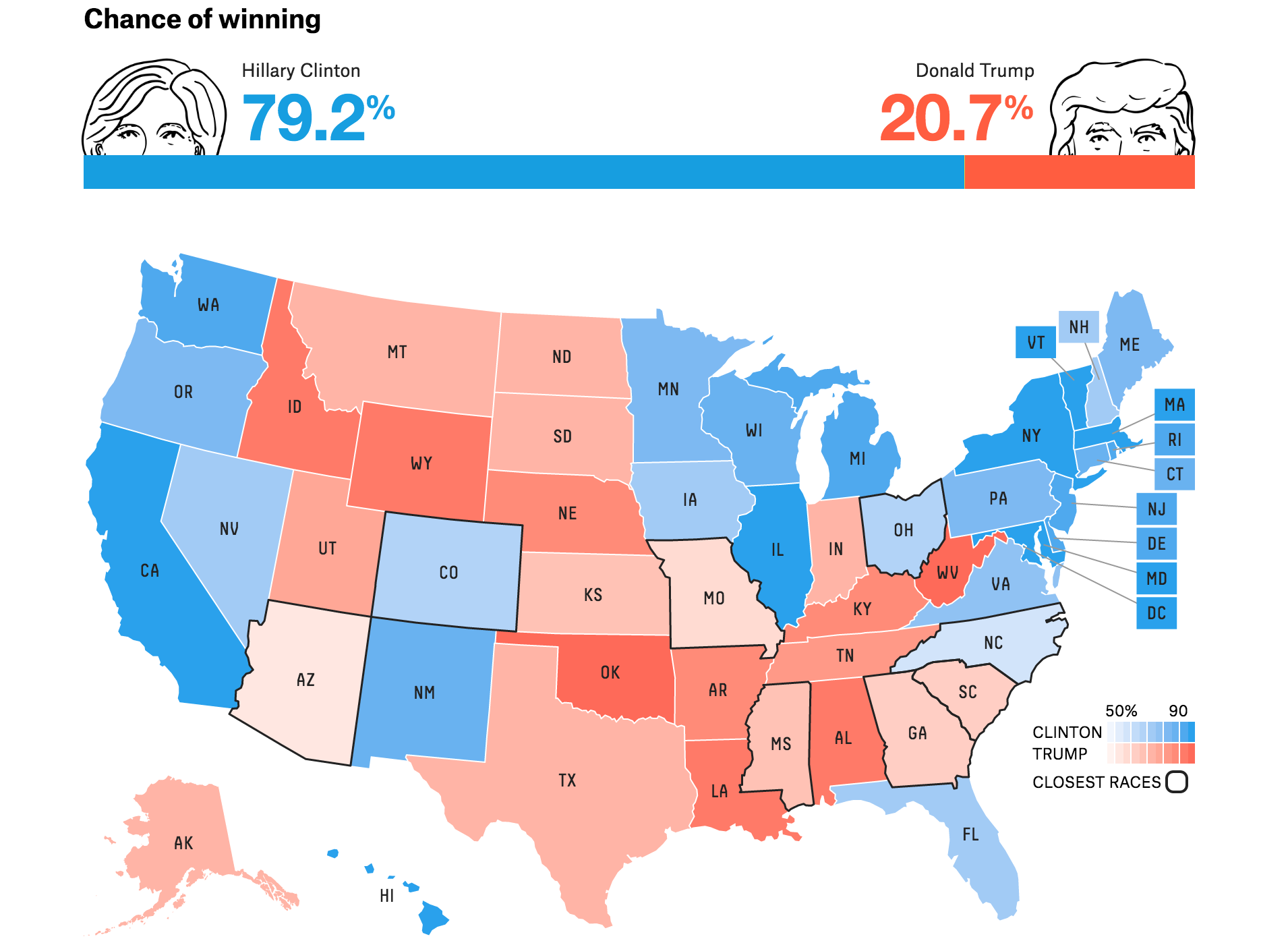Donald Trump has a 20 to 25 per cent chance of winning the presidency, Nate Silver predicts
The polling analyst warned that Mr Trump has 'a real chance', but Hillary Clinton is 'a fairly clear favourite'

Your support helps us to tell the story
From reproductive rights to climate change to Big Tech, The Independent is on the ground when the story is developing. Whether it's investigating the financials of Elon Musk's pro-Trump PAC or producing our latest documentary, 'The A Word', which shines a light on the American women fighting for reproductive rights, we know how important it is to parse out the facts from the messaging.
At such a critical moment in US history, we need reporters on the ground. Your donation allows us to keep sending journalists to speak to both sides of the story.
The Independent is trusted by Americans across the entire political spectrum. And unlike many other quality news outlets, we choose not to lock Americans out of our reporting and analysis with paywalls. We believe quality journalism should be available to everyone, paid for by those who can afford it.
Your support makes all the difference.Nate Silver, the polling whizz who correctly predicted the result in all 50 US states at the 2012 presidential election, has said Hillary Clinton stands a 75 to 80 per cent chance of winning this year’s race to the White House.
Unveiling its much-anticipated polling model for the 2016 presidential election on Wednesday, Mr Silver’s FiveThirtyEight website published two separate forecasts: one based solely on polls, and a second that also takes into account the economy and historical data. The first currently puts Donald Trump’s chances of victory at just 20.4 per cent, the second puts the probability of the Republican billionaire clinching victory in November at approximately 26 per cent.
Mr Silver not only predicted the outcomes in all 50 states in 2012, but also correctly forecast 49 out of 50 states at the 2008 election, and projected a popular vote margin between Democrat Barack Obama and Republican John McCain that was within one per cent of the ultimate result.
FiveThirtyEight’s 2016 election model, Mr Silver wrote in a blog post, is “mostly the same” as the one used in the past two presidential elections. “Trump faces longer odds and a bigger polling deficit than John McCain and Mitt Romney did at the same point in their respective races,” he added.
Calling the 2016 race correctly would be considered a kind of redemption for Mr Silver, who failed to accurately predict Mr Trump’s rise to the top of the Republican ticket. In August 2015, he put the property mogul’s chances of securing the nomination at a mere two per cent, later admitting that he ought to have paid more attention to the polls themselves, and less to historical data and personal assumptions.
The 2016 model includes deep dives into polls from all 50 states, and gives Ms Clinton a good chance of winning in key swing states such as Florida and Pennsylvania. At present, the forecast even favours her marginally in Arizona, which has not voted for a Democrat since 1996. A win there, Mr Silver wrote, could help Ms Clinton gain a majority in the electoral college “based on Western or heavily Hispanic states, even if she loses much of the industrial Midwest.”
Cautioning readers not to take Ms Clinton’s victory for granted, Mr Silver concluded: “A 20 per cent or 25 per cent chance of Trump winning is an awfully long way from 2 per cent, or 0.02 per cent. It’s a real chance… But the polls establish Clinton as a fairly clear favourite. And in contrast to almost everything else this election cycle, the polls have mostly been right so far.”
Join our commenting forum
Join thought-provoking conversations, follow other Independent readers and see their replies
Comments